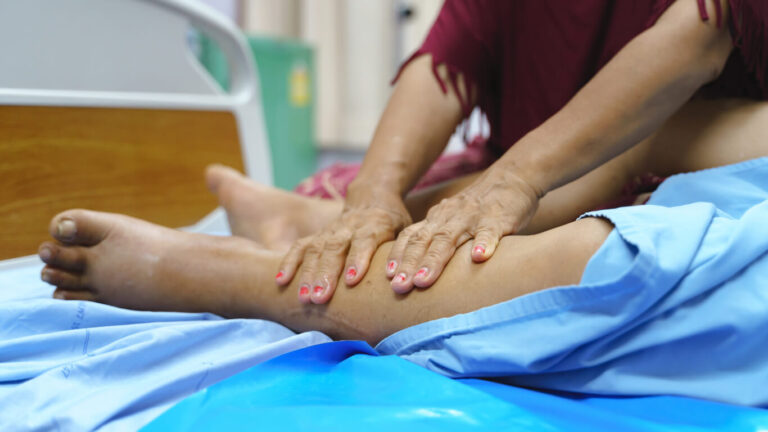Combined Decongestive Therapy
Combined Decongestive Therapy: The Gold Standard for Lymphedema Treatment
Lymphedema is more than just swelling; it’s a chronic condition that can drastically impact daily life. For many, Combined Decongestive Therapy (CDT) is a game-changer. This comprehensive approach offers effective, long-term management and relief, transforming patients’ lives worldwide. But what exactly makes CDT the gold standard? Let’s explore this transformative therapy in depth.

Combined Decongestive Therapy: The Gold Standard for Lymphedema Treatment
Lymphedema is more than just swelling; it’s a chronic condition that can drastically impact daily life. For many, Combined Decongestive Therapy (CDT) is a game-changer. This comprehensive approach offers effective, long-term management and relief, transforming patients’ lives worldwide. But what exactly makes CDT the gold standard? Let’s explore this transformative therapy in depth.
What Is Combined Decongestive Therapy?
CDT is a specialized treatment plan designed to manage lymphedema effectively. It addresses the underlying causes and symptoms of swelling by combining several complementary therapies. This holistic approach not only alleviates physical discomfort but also enhances patients’ emotional and social well-being.
The Components of CDT
Manual Lymphatic Drainage (MLD)
MLD is a gentle, hands-on technique stimulating the lymphatic system to drain excess fluid. This specialized massage encourages lymph flow, reducing swelling and discomfort.
- Promotes fluid movement
- Decreases swelling
- Enhances the overall lymphatic function
Compression Therapy
Compression garments or multilayer bandaging are critical in maintaining MLD results. These tools help prevent fluid buildup, ensuring sustained improvements.
- Applies graduated pressure
- Improves circulation
- Prevents re-accumulation of lymph fluid
Exercise and Movement
Targeted physical activity is crucial in CDT. Exercises are designed to improve lymphatic circulation, reduce stiffness, and enhance mobility.
- Stretching routines
- Water aerobics for reduced impact
- Range-of-motion exercises
Skin and Wound Care
Lymphedema often compromises skin health, increasing the risk of infections like cellulitis. Proper skincare minimizes these risks.
- Regular moisturization
- pH-balanced cleansers
- Prompt attention to cuts or wounds
Why CDT Is the Preferred Treatment
Comprehensive Management
CDT addresses the symptoms and causes of lymphedema through its multifaceted approach, offering a well-rounded treatment strategy.
Tailored to the Individual
Each treatment plan is customized based on the patient’s needs, ensuring better results and a higher quality of life.
Backed by Science
Numerous studies have validated the efficacy of CDT. Research shows a significant reduction in limb volume, improved mobility, and enhanced overall well-being for most patients.
Getting Started with CDT
Consultation with a Specialist
The journey begins with a consultation with a certified lymphedema therapist. The therapist assesses the condition and creates a personalized treatment plan.
The Intensive Phase
This phase involves frequent therapy sessions over several weeks to reduce swelling and improve mobility.
Maintenance and Self-Management
Once the initial goals are achieved, patients transition to a maintenance phase, which includes:
- Wearing compression garments daily
- Performing prescribed exercises
- Adopting a proactive skincare routine
Benefits of CDT
- Physical Relief: Reduction in swelling and improved limb functionality.
- Long-Term Prevention: Reduces the risk of complications such as cellulitis.
- Enhanced Quality of Life: Boosts self-confidence and mobility, helping patients regain independence.
Common Misconceptions About CDT
“It’s too painful.”
In reality, CDT is designed to be gentle and therapeutic. It provides relief, not discomfort.
“Compression garments are hard to use.”
Modern garments are more comfortable and stylish than ever, with options tailored to individual preferences.
“It cures lymphedema.”
While CDT doesn’t cure the condition, it is highly effective in managing symptoms and preventing progression.
Emerging Trends in Lymphedema Care
Smart Compression Technology
Advanced garments now have sensors to monitor pressure and limb volume, enhancing personalized care.
Telemedicine for Follow-Ups
Virtual consultations make it easier for patients to stay connected with their therapists.
Increased Awareness Campaigns
Advocacy groups and public health campaigns are raising awareness about lymphedema and the benefits of CDT.
Maximizing the Effectiveness of CDT
Consistency is Key
Follow the treatment plan diligently to maintain results and prevent setbacks.
Learn About Your Condition
Understanding triggers and risk factors empowers patients to take proactive measures.
Seek Community Support
Joining support groups can provide emotional strength and valuable insights from others managing lymphedema.
Conclusion
Combined Decongestive Therapy is more than a treatment—it’s a comprehensive solution for managing lymphedema. By addressing the condition from multiple angles, CDT helps patients reclaim control over their lives, reducing physical discomfort and boosting emotional well-being. Whether you’re newly diagnosed or exploring better management options, CDT is a beacon of hope and effective care.
FAQs
What is the typical duration of CDT treatment?
The intensive phase usually lasts 2-4 weeks, followed by a lifelong maintenance routine.
Are there side effects of CDT?
CDT is generally safe. However, patients should consult their therapist if they experience any discomfort or skin irritation.
Can CDT be combined with other treatments?
Yes, CDT often complements other therapies like surgical interventions or medications.
Does insurance cover CDT?
Many insurance providers cover CDT, but confirming coverage with your plan is important.
How can I find a qualified CDT therapist?
Search for certified professionals through organizations like the Lymphatic Education & Research Network or local medical directories.
